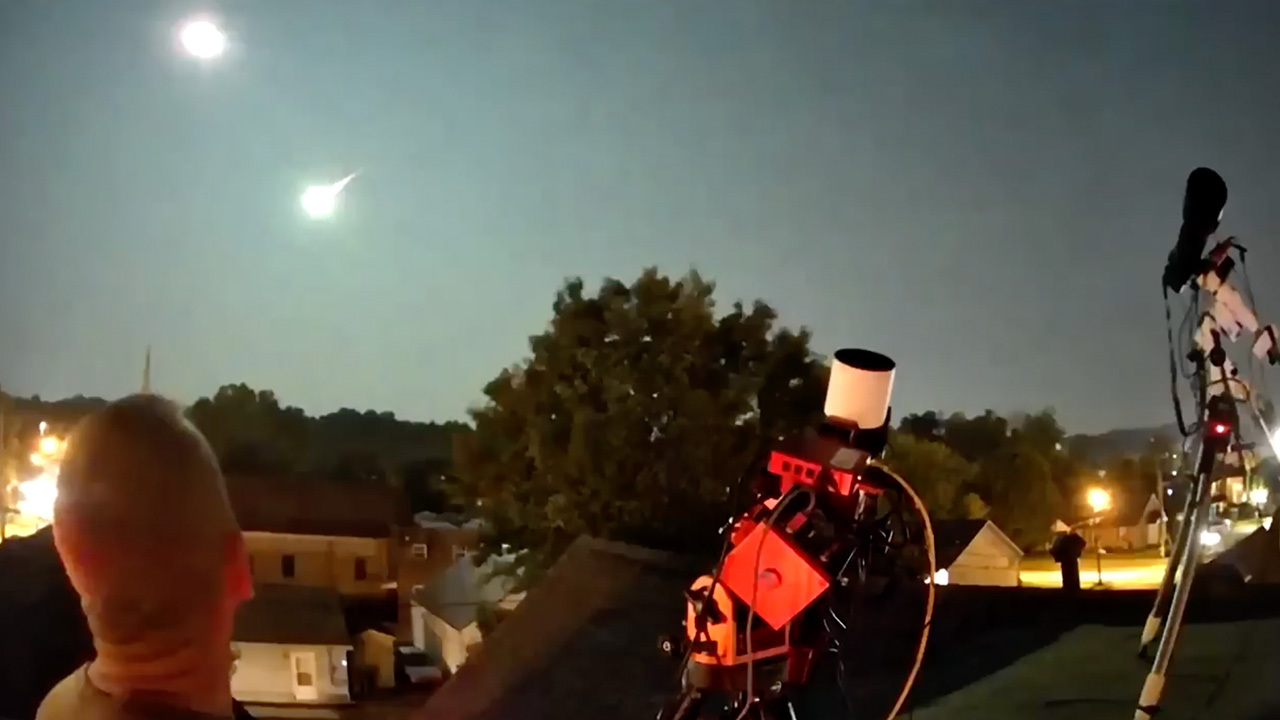Watch a brilliant fireball shine brighter than the full moon (video)
The fireball was seen across nine U.S. states.
In the early morning hours of Wednesday (Aug. 2), a fireball streaked across southeastern United States skies. And thanks to stargazers in the area, the event was captured on film.
The American Meteor Society received 74 reports of a fireball on the night of August's Full Sturgeon Moon from Georgia, Illinois, Indiana, Kentucky, Ohio, Tennessee, Virginia, West Virginia and North Carolina. Based on the reports, the fireball appeared to fly across the sky while heading southeast.
Some reports also stated the fireball created sonic booms that were loud enough to rattle buildings and wake observers. In the footage above, the fireball was captured streaking across the sky by Bill Stewart (aka AstroSeabee) in West Virginia and by David Tiller in Tennessee.
Related: The Perseid meteor shower peaks in August. Here's how to see it
"I've never seen anything like it. The initial flash was brilliant and brighter than the street light in the yard I was standing in," an observer named Dustin L. wrote to AMS. "That's why I looked up and saw it. The boom moments later was enough to startle me."
"Light brilliance was enough to overpower current full moon in east [sic]," reads another report submitted by a Jack W.
It was initially speculated that the fireball was likely caused by the Perseid meteor shower or one of two other currently active showers. However, its path did not line up with the radiant of any of those showers, or the point in the sky from which a meteor shower originates.
Breaking space news, the latest updates on rocket launches, skywatching events and more!
As it turns out, the fireball was likely a comet fragment, according to meteor expert Bill Cooke of NASA's Meteoroid Environment Office. Cooke told Spaceweather.com that the fireball was caused by a comet fragment around 1 foot (30 cm) in diameter with a weight close to 75 pounds (34 kg).
"It entered Earth's atmosphere about 50 miles above the Kentucky town of Krypton (yes, really), moving roughly southeast at 37,000 miles per hour," Cooke told Spaceweather.com. "The object traveled 65 miles through the atmosphere before disintegrating 30 miles above Duffield, Virginia."
Cooke added that, based on acoustic data recorded by the University of Western Ontario, the fireball produced an explosion equivalent to around 2 tons of TNT and at its peak was 5 times brighter than the full moon.
The identity of the comet responsible for the fragment remains unknown.

Brett is curious about emerging aerospace technologies, alternative launch concepts, military space developments and uncrewed aircraft systems. Brett's work has appeared on Scientific American, The War Zone, Popular Science, the History Channel, Science Discovery and more. Brett has degrees from Clemson University and the University of North Carolina at Charlotte. In his free time, Brett enjoys skywatching throughout the dark skies of the Appalachian mountains.

